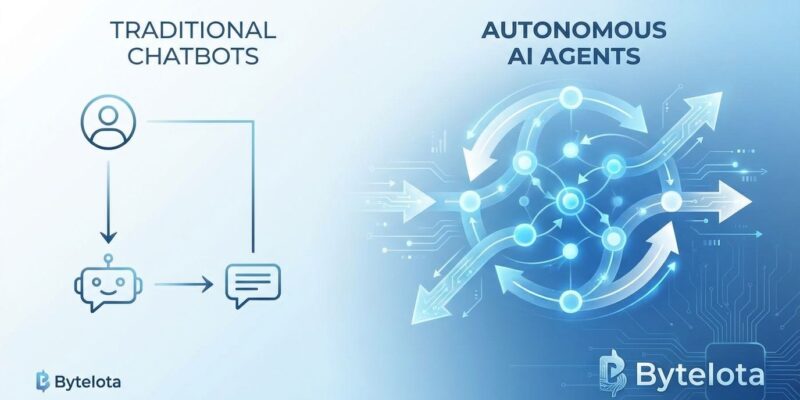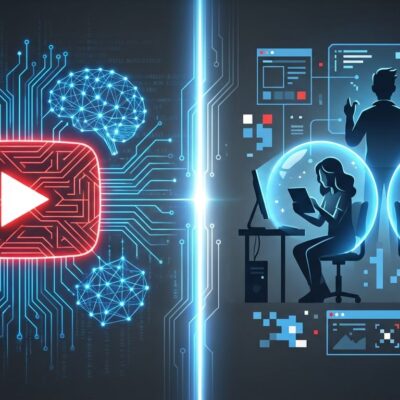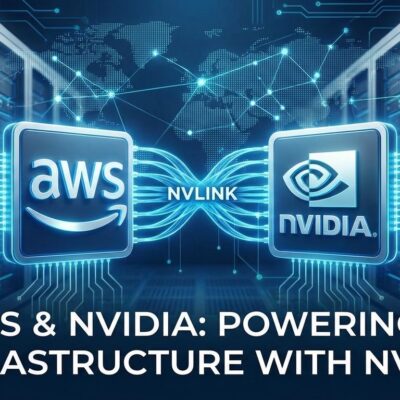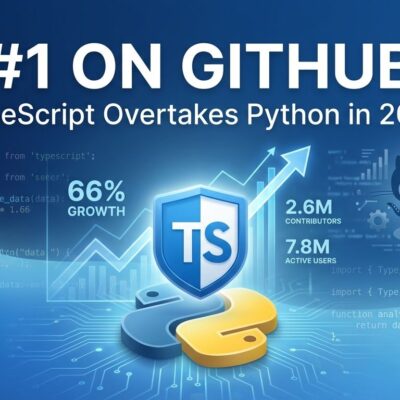
November 2025 marks the death of the AI chatbot era. Frontier models from OpenAI, Anthropic, and others are no longer serving simple question-and-answer interfaces—they’re powering agentic workflows that reason, plan, and act autonomously. With $53 billion in new partnerships announced this month and enterprises doubling their pilot programs, the industry is pivoting hard from chatbots to agents. But the road ahead is messier than the hype suggests.
Chatbots vs Agents: The Architecture That Changes Everything
The technical distinction matters. Chatbots are single-turn, reactive systems that respond to prompts. Agents are multi-step autonomous systems that dynamically plan, use tools, and adjust their approach. It’s not marketing spin—it’s an architectural shift.
Anthropic’s framework clarifies the divide: workflows orchestrate LLMs through predefined code paths, while agents let LLMs dynamically direct their own processes. Claude 4’s extended thinking exemplifies this, alternating between reasoning and tool calls with a 200k token context window for a 54% improvement in complex coding tasks.
The $53 Billion November
Money talks. OpenAI and AWS announced a $38 billion, seven-year partnership to scale enterprise agentic workloads with hundreds of thousands of NVIDIA GPUs. Amazon’s stock added $140 billion in market value in a single day.
Microsoft and NVIDIA then committed $15 billion to Anthropic ($10B from NVIDIA, $5B from Microsoft), pushing its valuation to $350 billion. Anthropic committed to $30 billion in Azure compute and 1 gigawatt of NVIDIA’s Grace Blackwell systems. Claude is now the only frontier model across all three major cloud providers.
These aren’t consumer chatbot features. This is enterprise agent infrastructure explicitly targeting “workflows requiring reliability and transparency.”
MCP: The USB-C for AI Agents
Behind the $53 billion headlines, a technical standard is reshaping the landscape. The Model Context Protocol (MCP), introduced by Anthropic in November 2024, provides a universal way to connect AI agents to external systems. Think of it as USB-C for AI—one protocol replaces fragmented integrations.
Adoption has been rapid. OpenAI officially integrated MCP in March 2025 across ChatGPT and its Agents SDK. Google DeepMind followed. The community built thousands of MCP servers with SDKs for Python, TypeScript, C#, and Java. For developers, MCP signals a shift from ad-hoc prompting to rigorous context engineering—the new critical skill.
Where Agents Are Actually Working
Service desk management leads agentic AI adoption. Autonomous incident management showcases what agents can do: detect server degradation, analyze logs, create tickets, notify teams, and run diagnostics—all without human intervention. Agents handle 50% of customer interactions with 75% auto-resolution rates while cutting low-value work by 25-40%.
But here’s the catch: these are controlled environments with structured workflows. Complexity scales fast beyond that.
The Reality Check
$53 billion doesn’t erase hard numbers. The best agentic AI solutions achieve below 55% success rates on CRM tasks. Error rates compound exponentially: 95% per-step reliability means just 36% success over 20 steps. Production demands 99.9%+ reliability.
Over 90% of CIOs report compute costs limit AI value, with many underestimating expenses by up to 1,000%. POC phases alone run $300k-$2.9M. Gartner predicts 40% of agentic AI projects will be canceled by 2027 due to costs, unclear value, and inadequate risk controls.
The pilot-deployment gap: enterprise pilots nearly doubled from 37% (Q4 2024) to 65% (Q1 2025), but full deployment remains stagnant at 11%. That’s the reality of scaling costly systems in production. And 72% of companies have already experienced outages from AI-generated code.
What Developers Need to Know
The chatbot era is over. Agentic AI is the new baseline, but not a silver bullet. Context engineering is replacing prompt engineering. MCP is the emerging standard. And choosing between agents and chatbots still matters—predictability favors workflows for well-defined tasks, while flexibility justifies agents at scale. The infrastructure investments are real, but enterprise deployment is hard, expensive, and prone to failure. November 2025 marks a pivot, not a panacea.












